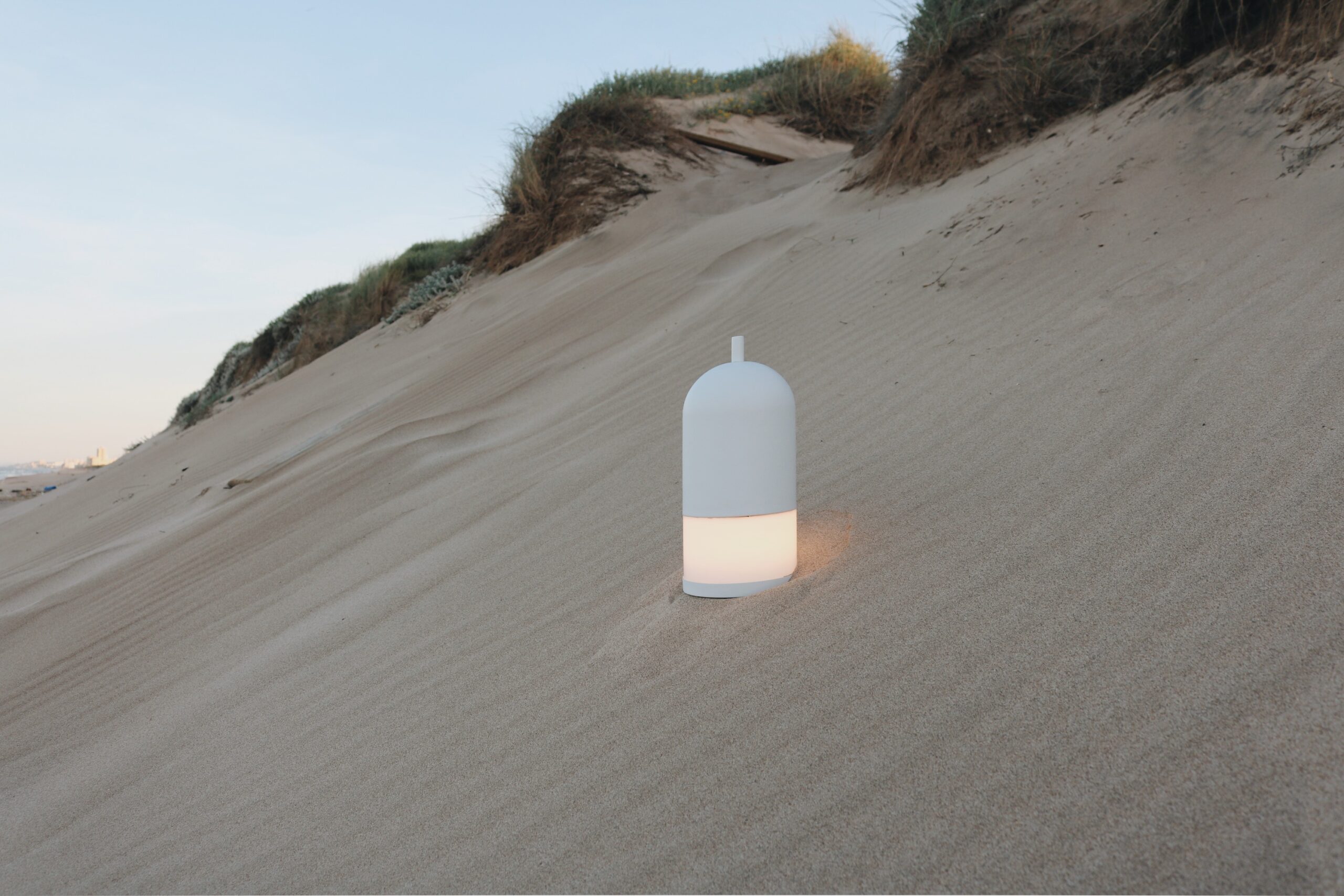
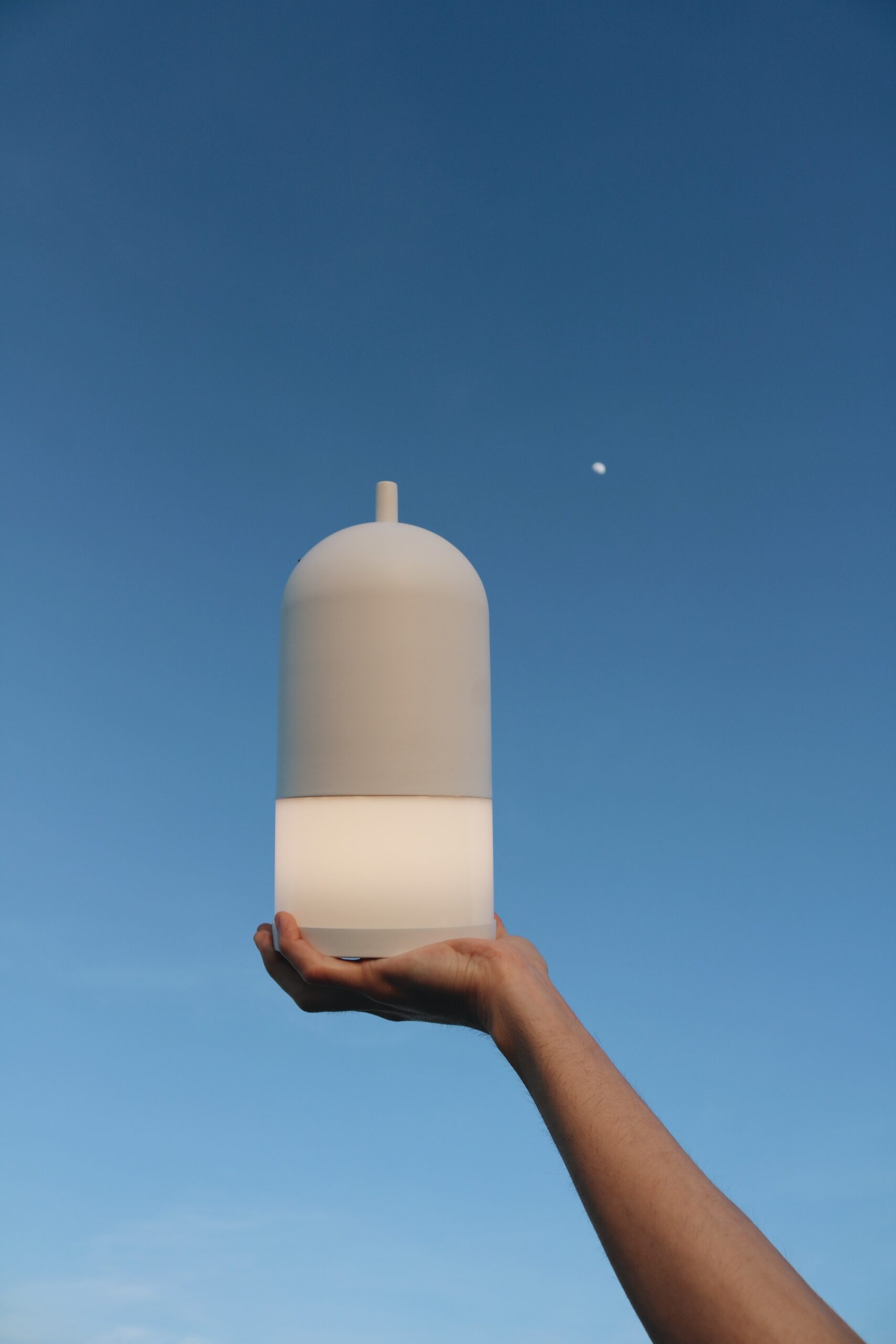
Photographs: Nuel Puig.
Product design.
The Apolo lamp was born out of a fascination that has been with me since childhood: the feeling of looking up at the night sky and sensing that there is something beyond, something that invites us to move, to discover, to attempt the impossible. When I designed it for the historic lighting firm Almerich, I wanted it to be more than just a light fixture, but rather a piece that would ignite a collective memory: that moment in 1969 when the Apollo 11 mission left Earth to touch the Moon. It was not just a technological feat, but a moment when millions of people shared the same heartbeat, watching as a beam of light, as powerful as it was fragile, broke through the darkness. That light that propelled the spacecraft into the unknown was the seed of Apollo: an object that not only illuminates, but also tells a story.
Its silhouette tilts slightly upwards, as if it wanted to take off. This is not a formal whim, but a statement: light is not only projected, it also rises, like the spirit when it dreams. The soft, almost organic shape is designed to be intimate, to integrate with human gestures. I did not want a cold and distant piece, but a silent companion that, just by turning it on, transports you to a different place: a terrace at dusk, a calm room, a corner where light becomes thought. In every curve there is an echo of a spaceship, but reinterpreted for the home; in every metal surface there is a nod to the moon, but transformed into a personal satellite that lives with you.

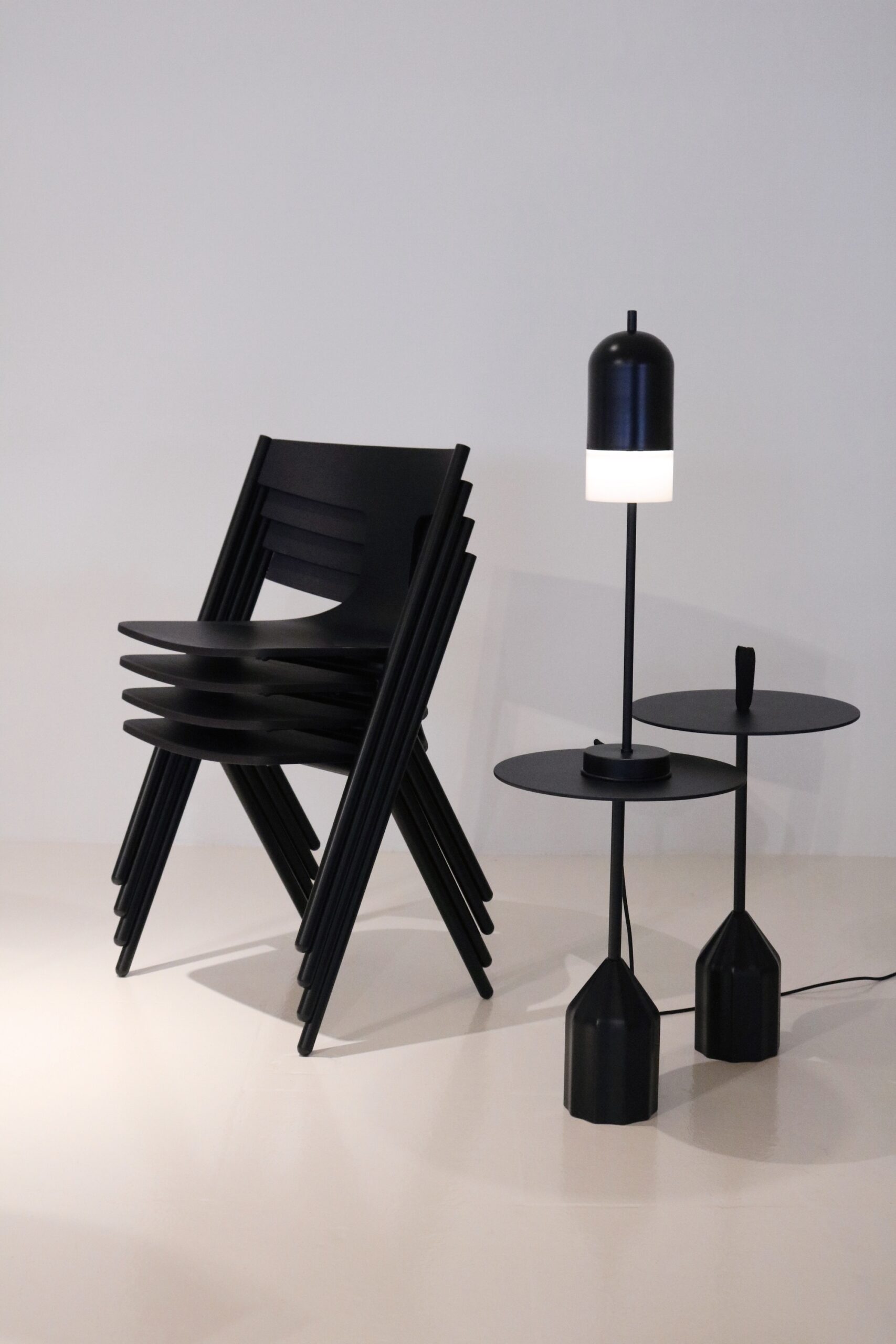
The technique is not just a means to an end: it is part of Apolo’s character. The body, crafted from turned metal, provides strength and precision, but also a texture that invites you to run your hand over it. Inside, the light comes from a low-energy, dimmable LED system, allowing you to adjust the intensity as if you were controlling your own sunrise or eclipse. The induction charging system reinforces its independence: Apolo does not depend on visible cables or ties, it is free to accompany you wherever you need it. And as it is resistant to outdoor environments, it can be placed under the stars without fear, extending its narrative beyond the walls.
From the beginning, I thought of it as a family. That is why the collection includes tabletop, floor and portable formats, all united by the same formal language. The scale changes, but never the essence: always delicate, always with that vertical aspiration, always evoking a journey. It is versatile because life is, and because light knows no boundaries; it knows how to be in the intimacy of a bedside table, in the social energy of a living room, or in the stillness of a summer terrace.
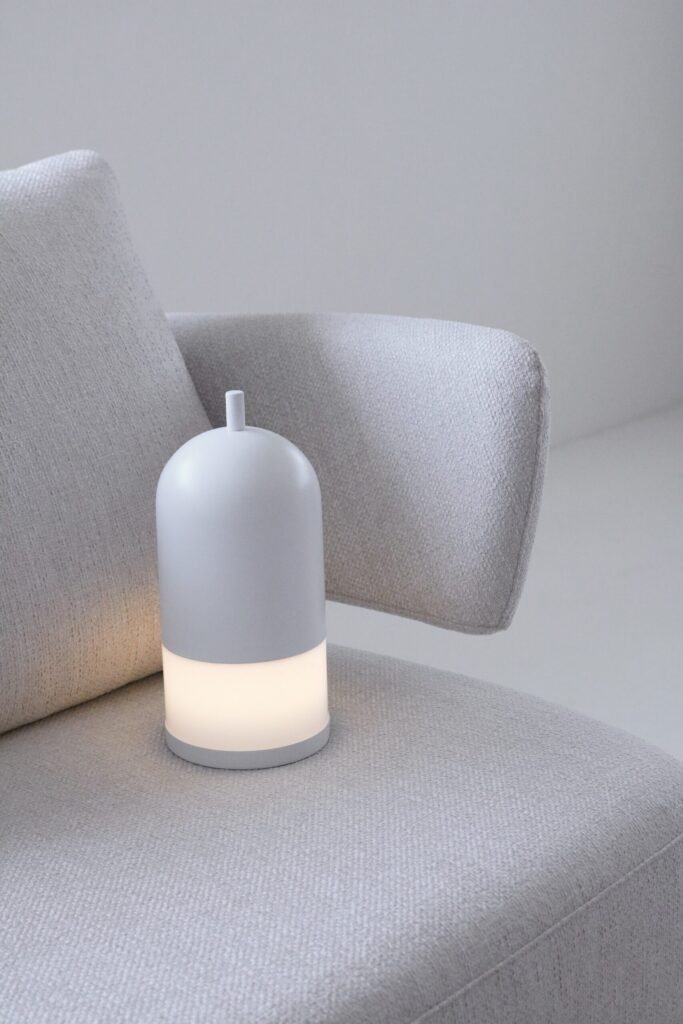
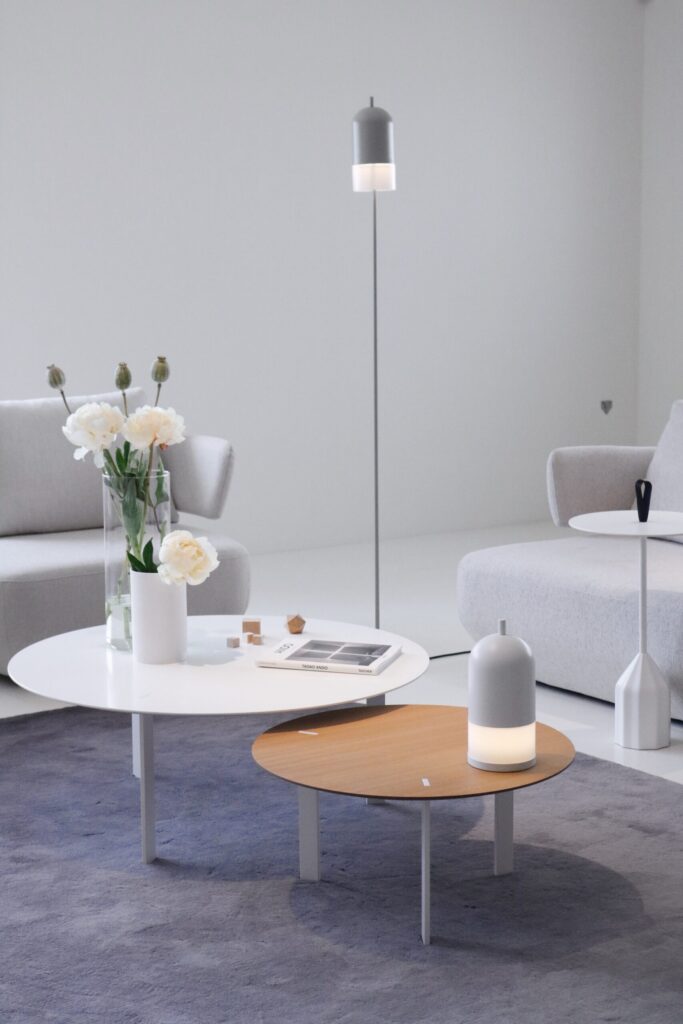

The colour and finish are the other side of its story. The first version, in neutral metal, evokes the coldness of space, but I wanted the collection to open up to other shades: warm, embracing hues and deep, enveloping tones. Just as the moon changes its face depending on the time or season, Apolo adapts to the character of the space it inhabits. It is not a lamp that imposes itself, it is a lamp that converses: it integrates, but never goes unnoticed.
For me, Apolo is a piece that moves between the symbolic and the functional. It serves, it illuminates, but it also speaks. It is memory and metaphor: an invitation to look up even in the most everyday moments. It does not seek to dazzle with size or excessive decoration; its power lies in its subtlety, in an elegance that does not need to shout to make itself felt. It is invisible when you are not looking at it, but impossible to forget when you turn it on. And therein lies its magic: transforming a moment without breaking it.
There is something special about collaborating with Almerich. It is not just about working with a company with more than fifty years of history, but about engaging with tradition to take it to another place. Apolo respects the brand’s legacy, its commitment to quality and well-understood light, but translates it into a contemporary language, attentive to technology, sustainability and emotion. It is a bridge between generations, between inherited know-how and a vision that seeks to explore new horizons.
I imagine Apolo in many places: on a desk, illuminating the gestation of an idea; on an evening outdoors, like a domestic constellation; on a winter night, casting a soft glow to accompany an intimate conversation. No matter where it is, it is always a silent reminder that even in everyday life there is room for beauty, for inspiration, for that gesture of looking up.
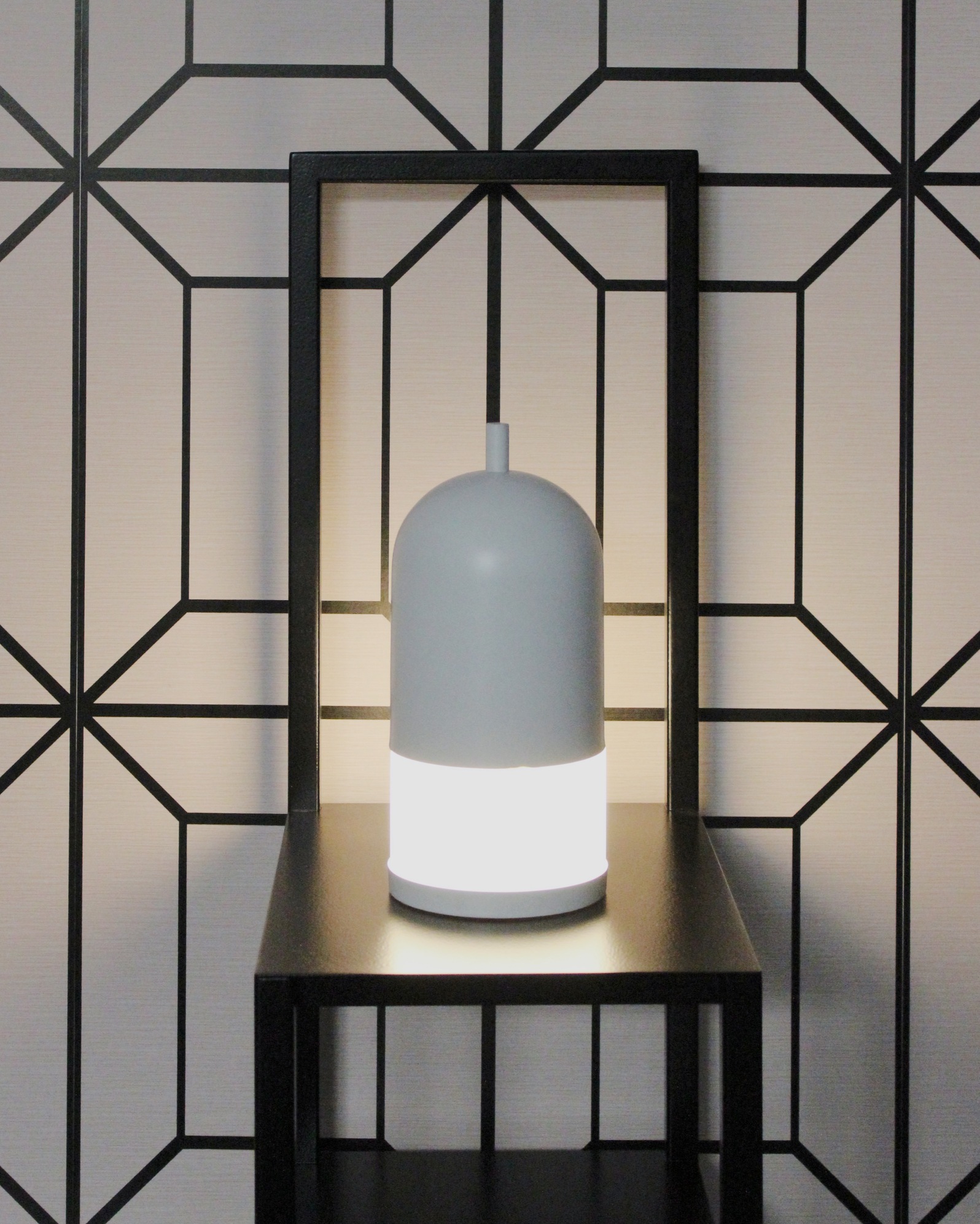
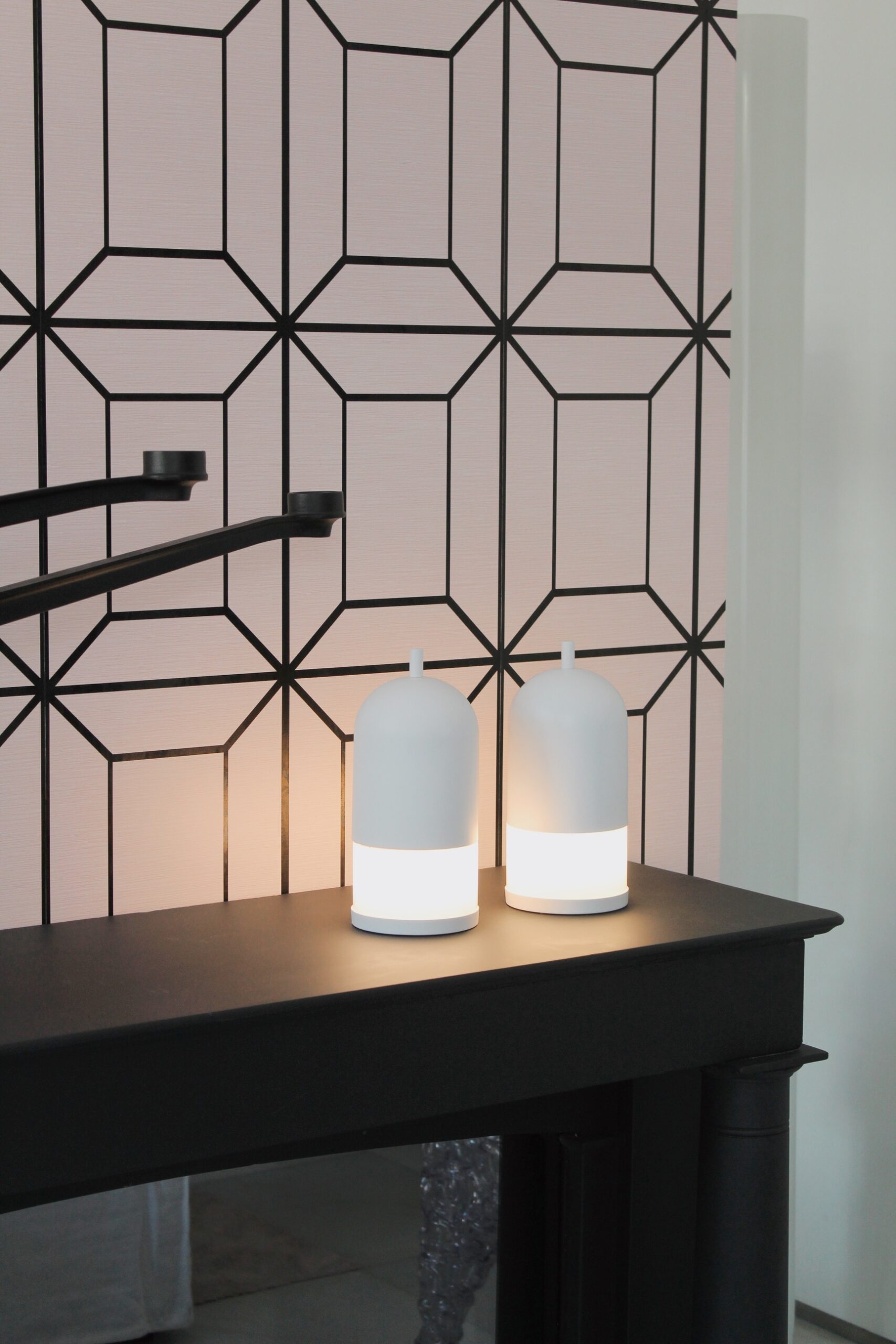

In the end, Apollo is not just a lamp. It is a little story of light that fits into any home, but looks far beyond. A domestic satellite that, every time it is switched on, reminds us that exploration did not end on the Moon: it continues in every corner we illuminate, in every moment we decide to live intensely. Because, even though we live on solid ground, we can always turn on a light and feel, for an instant, that we are taking off.
©2025 sigfrido serra studio. All Rights Reserved.